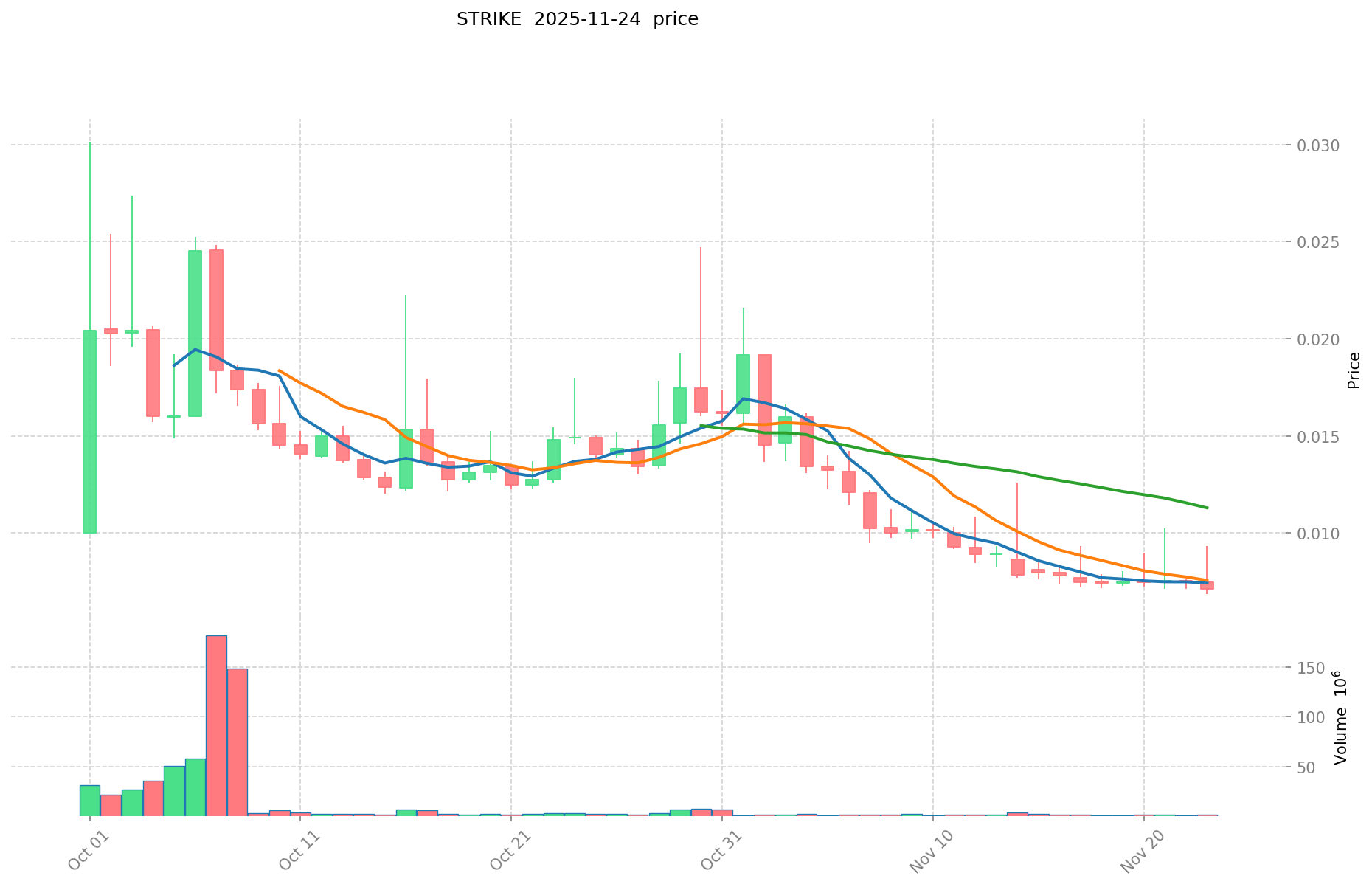What is STRIKE: Understanding the Power of Collective Action in Labor Movements
StrikeBit AI's Positioning and Significance
In 2025, StrikeBit AI (STRIKE) was launched as a Modular Agent Protocol (MAP), aiming to solve the challenges of scalable collaboration in intelligent multi-agent systems.
As a pioneering platform for building and composing intelligent multi-agent systems, StrikeBit AI plays a crucial role in the field of artificial intelligence and decentralized collaboration.
As of 2025, StrikeBit AI has become an emerging player in the AI and blockchain intersection, with a growing community of developers and users. This article will delve into its technical architecture, market performance, and future potential.
Origin and Development History
Background of Creation
StrikeBit AI was created in 2025 to address the need for scalable and flexible intelligent multi-agent systems. It emerged in the context of advancing AI technologies and the growing demand for decentralized collaborative systems.
The launch of StrikeBit AI brought new possibilities for developers and businesses looking to build and expand intelligent multi-agent systems.
Important Milestones
- 2025: Launch of the main network, enabling users to build, expand, and compose intelligent multi-agent systems.
With the support of its development team and community, StrikeBit AI continues to optimize its technology, security, and real-world applications.
How Does StrikeBit AI Work?
Decentralized Control
StrikeBit AI operates on a decentralized network of computers (nodes) spread across the globe, free from control by a single entity. These nodes collaborate to validate transactions, ensuring system transparency and resilience, and empowering users with greater autonomy.
Blockchain Core
StrikeBit AI's blockchain is a public, immutable digital ledger that records every transaction. Transactions are grouped into blocks and linked through cryptographic hashes, forming a secure chain. Anyone can view the records, establishing trust without intermediaries.
Ensuring Fairness
StrikeBit AI likely employs a consensus mechanism to validate transactions and prevent fraudulent activities such as double-spending. Participants maintain network security through activities like staking or running nodes, and are rewarded with STRIKE tokens.
Secure Transactions
StrikeBit AI uses public-private key encryption to secure transactions:
- Private keys (like secret passwords) are used to sign transactions
- Public keys (like account numbers) are used to verify ownership
This mechanism ensures fund security while maintaining a certain level of transaction privacy.
STRIKE's Market Performance
Circulation Overview
As of November 25, 2025, STRIKE's circulating supply is 209,900,000 tokens, with a total supply of 2,000,000,000.
Price Fluctuations
STRIKE reached its all-time high of $0.03015 on October 1, 2025. Its lowest price was $0.00685, recorded on November 23, 2025. These fluctuations reflect market sentiment, adoption trends, and external factors.
Click to view the current market price of STRIKE

STRIKE Ecosystem Applications and Partnerships
Core Use Cases
STRIKE's ecosystem supports various applications:
- AI Integration: Developing intelligent multi-agent systems for scalable collaboration.
- DeFi: Potential for decentralized finance applications leveraging the modular agent protocol.
Strategic Partnerships
Information about STRIKE's strategic partnerships is currently limited.
Controversies and Challenges
STRIKE faces the following challenges:
- Market Volatility: Significant price fluctuations, with an 80.90% decrease over the past year.
- Adoption: As a relatively new project, gaining widespread adoption and recognition.
- Competition: Competing with established blockchain platforms and AI integration projects.
These issues have sparked discussions within the community and market, driving STRIKE's ongoing innovation efforts.
STRIKE Community and Social Media Atmosphere
Fan Enthusiasm
STRIKE's community is growing, with 3,652 holders as of the latest data. On X (formerly Twitter), posts and hashtags related to STRIKE are gaining traction.
Social Media Sentiment
Sentiment on X shows a mix of opinions:
- Supporters praise STRIKE's innovative approach to AI integration in blockchain.
- Critics may express concerns about the project's price performance and market volatility.
Recent trends indicate cautious sentiment due to the significant price decline over the past year.
Hot Topics
X users discuss STRIKE's potential in AI-blockchain integration and its modular agent protocol capabilities.
More Information Sources for STRIKE
- Official Website: Visit STRIKE's official website for features, use cases, and latest updates.
- Whitepaper: STRIKE's whitepaper details its technical architecture, goals, and vision.
- X Updates: On X, STRIKE uses @StrikeBitDeFI, providing updates on technical developments and community activities.
STRIKE Future Roadmap
Detailed information about STRIKE's future roadmap is not currently available.
How to Participate in STRIKE?
- Purchase Channels: Buy STRIKE on Gate.com
- Storage Solutions: Use compatible wallets that support BEP-20 tokens
- Participate in Governance: Stay tuned for any announcements regarding community governance
- Build the Ecosystem: Visit the project's documentation for information on development opportunities
Summary
STRIKE aims to redefine blockchain technology through its Modular Agent Protocol (MAP), enabling the building and composition of intelligent multi-agent systems for scalable collaboration. Its innovative approach to AI integration in blockchain sets it apart in the cryptocurrency space. Despite facing challenges such as market volatility and the need for wider adoption, STRIKE's focus on advanced AI capabilities in blockchain presents an intriguing value proposition. While the project is still in its early stages, its unique approach to combining AI with blockchain technology makes it a project worth watching for both newcomers and experienced players in the decentralized technology future.
FAQ
What do you mean by strike?
Strike refers to a sudden, impactful action. In crypto, it often means the price level at which an option contract can be exercised. It's a key term in options trading and DeFi protocols.
What is the strike app used for?
The Strike app is a payment platform for businesses to send and receive bitcoin using the Bitcoin Lightning network. It facilitates quick and low-cost transactions globally.
What is strike in work?
A strike is a collective action where employees intentionally stop or slow down work to protest or negotiate with employers, typically for better wages, working conditions, or benefits.
Why is Starbucks going on strike?
Starbucks workers are striking to protest unfair labor practices and demand better pay, fair union contracts, and improved working conditions.
Share
Content